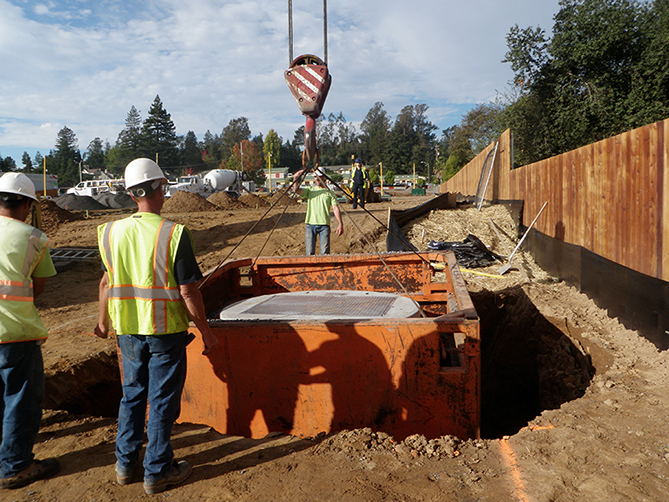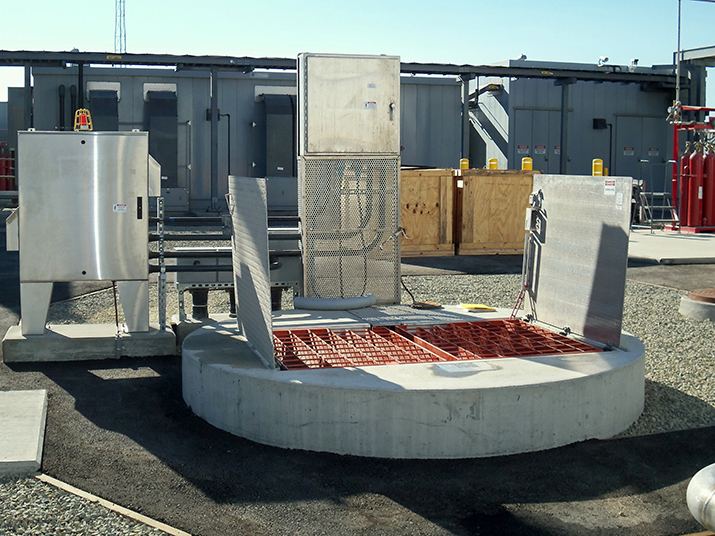
Romtec Utilities provides complete pump station electrical controls that can be configured with above-ground disconnect stands and in-ground junction boxes. While in many respects these two components serve a similar purpose and have similar supply and installation costs, there are several reasons to choose one configuration over another. Let’s take a look at the benefits and potential drawbacks of these two types of electrical junctions for wiring below-grade pump station components.
The first question to answer about using a disconnect stand or an in-ground junction box is to recognize if you need one at all. These two devices serve as a junction between the in-well electrical components and the control panel, but a junction is not always needed. The biggest factor in determining the need for an electrical junction is the length of the pump cables. Typically, these are supplied by pump manufacturers with a maximum length of about 100’. Levels sensors, such as floats, also have an upper limit on cable length. Disconnect panels and junction boxes are not necessary if the control panel can be located within reach of the pump and level sensor cables while staying outside of classified spaces.

The next question to answer is whether it is preferential to connect the in-well electrical components directly to the control panel. This approach eliminates the need for disconnect stands and junction boxes, but site conditions and space classifications don’t always allow a control panel to be installed within 100’ of the pumps. Maintenance is another important consideration. All electrical connections need to be severed in order to pull the pumps. A disconnect stand makes this process much easier than disconnecting the pump cables from the control panel. Often times, even if a control panel is within reach of the pump cables, a disconnect stand will be included to make maintenance of the system easier.
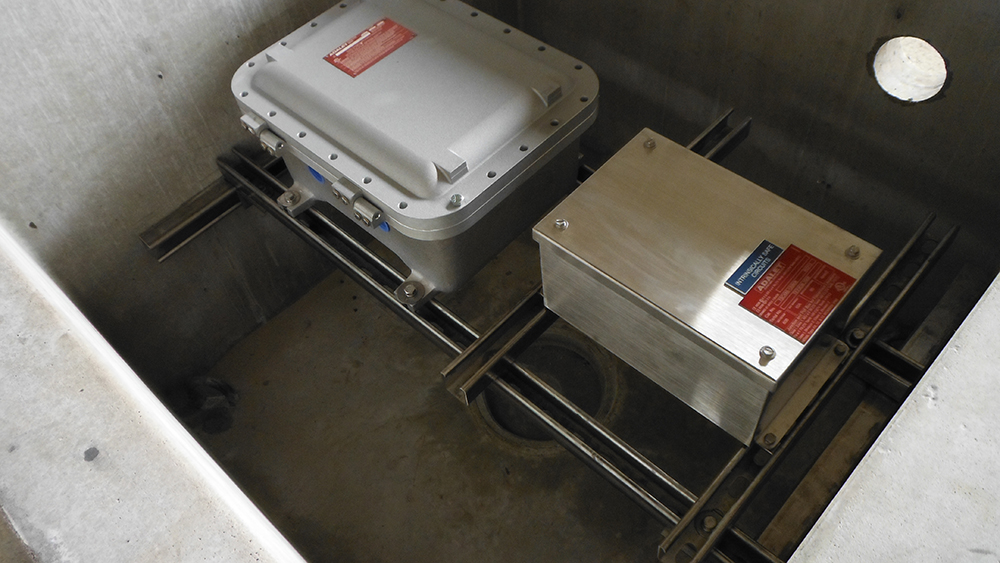
An in-ground junction box can be configured to function in a similar way, but these devices are not as quick and simple as a disconnect stand. The benefit is that in-ground junction boxes allow the complete electrical junction to be installed below-grade. On job sites where traffic is expected, like in a road, it is not possible to install an above-ground feature without disrupting the traffic. In some locations, In-ground junction boxes are used for aesthetic purposes as they appear as a level surface. Junction boxes can be wired in different ways depending on if they are located inside or outside of a classified space.
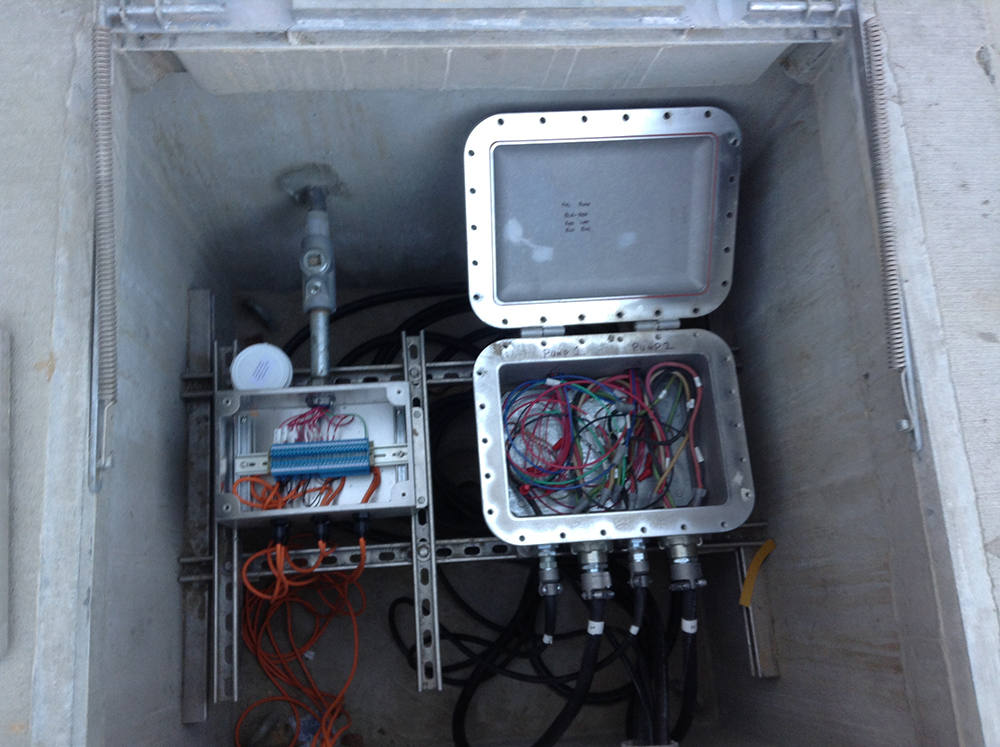
Classified spaces, also called hazardous locations, define the potential for flammable and/or combustible materials to be present in a given space in unsafe concentrations. Inside of hazardous locations, electrical components are subject to a variety of safety regulations depending on the governing code and the classification/division of the hazardous space. Disconnect panels are always designed to be located outside of a hazardous location, but in-ground junction boxes can be located both inside and outside of the space. When wired outside of a hazardous location, in-ground junction boxes can be wired in a much more affordable way.
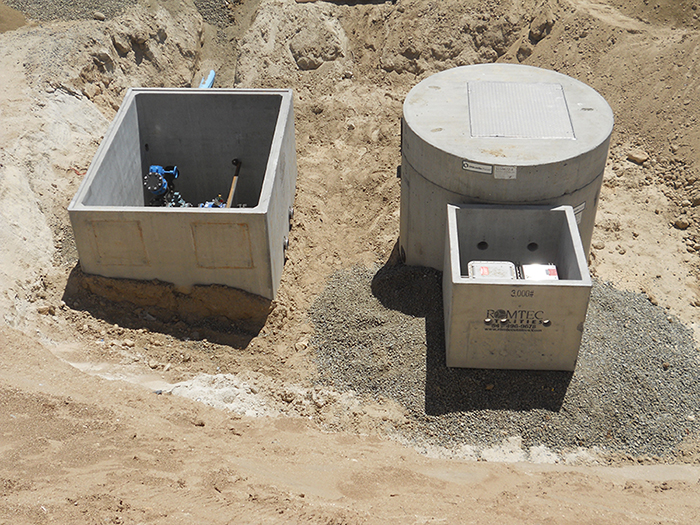
In general, in-ground junction boxes are more affordable at the time of installation. Over the lifespan of a system, however, disconnect stands provide a lot of costs savings because of the advantages they offer to system maintenance. The disconnect stand makes the electrical junctions more accessible and easier to disconnect and maintain. In-ground junction boxes are usually more cumbersome for system maintenance operations.
When approaching electrical disconnect stands versus in-ground junction boxes, there are certain requirements that are predicated on the job site and others defined by the preferences of the system owners. Contact Romtec Utilities today to see how our electrical engineers can help your pumping system project get the best electrical design possible.

